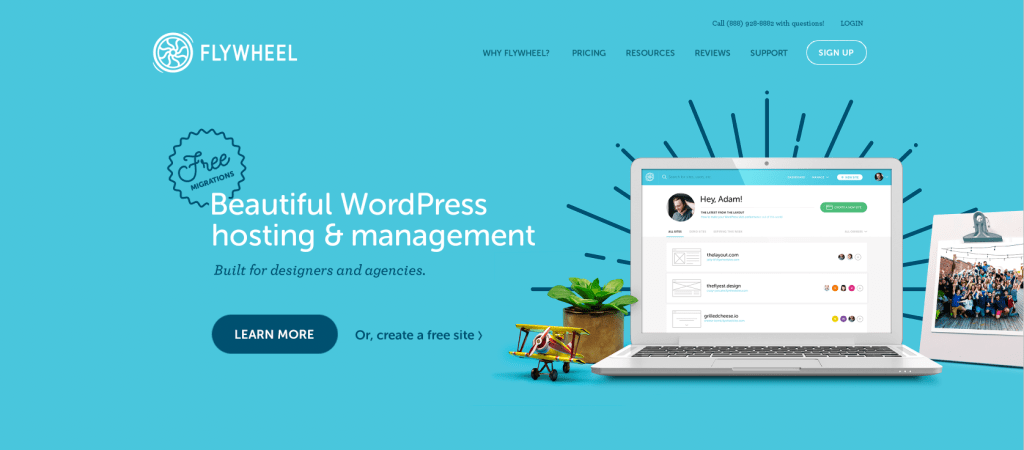Disclosure: We’re reader-supported. When you buy through links on our site, we may earn an affiliate commission at no extra cost to you. For more information, see our Disclosure page. Thanks.
Contents
- 1 How to Make a WordPress Website With AI (Step-by-Step Guide)
- 1.1 Step 1: Set Up a WordPress Website
- 1.2 Step 2: Integrate AI Tools for Content Creation
- 1.3 Step 3: Integrate AI Chatbot for User Engagement
- 1.4 Step 4: Use AI for Design and Layout
- 1.5 Step 5: Integrate AI for SEO and Analytics
- 1.6 Step 6: Enhance Your Website with AI-Powered Personalization
- 1.7 Step 7: Test, Optimize, and Launch Your Website
- 1.8 Conclusion
How to Make a WordPress Website With AI (Step-by-Step Guide)
Creating a WordPress website with AI involves integrating artificial intelligence tools and features that can help streamline the website creation process, enhance user experience, and improve overall performance. Here’s a step-by-step guide to building a WordPress website with AI:
Step 1: Set Up a WordPress Website

- Choose a Domain and Hosting:
- Select a domain name that reflects your brand or website purpose.
- Choose a hosting provider that supports WordPress (e.g., Flywheel or A2 Hosting).
- Many hosting services offer one-click WordPress installation.
- Install WordPress:
- If you’re using a hosting provider that supports WordPress installation, you can install WordPress with a click.
- Alternatively, you can manually install WordPress by downloading it from wordpress.org and following the installation instructions.
- Select a Theme:
- Once WordPress is installed, choose a theme that suits your website’s style. You can browse free and premium themes in the WordPress theme repository or other theme marketplaces like ThemeForest or Elegant Themes.
- Customize Your Website:
- Go to the Appearance > Customize section of the WordPress dashboard to customize the theme. You can adjust colors, fonts, header layout, and other elements.
Step 2: Integrate AI Tools for Content Creation
AI tools can help you with writing, content optimization, and even SEO for your website. Here are a few steps to get started:
- Install an AI Content Plugin:
- There are several AI-based plugins for content creation and management. Some popular ones are:
- AI Writer: An AI-powered tool that generates content based on prompts.
- GPT-3 Plugins: Like Jasper, Writesonic, or Copy.ai, which use GPT-based models to generate content.
- Install these plugins via the Plugins > Add New section of your dashboard. Simply search for the plugin name, install, and activate it.
- There are several AI-based plugins for content creation and management. Some popular ones are:
- Use AI for Content Creation:
- After activating the plugin, you can start using it for generating blog posts, articles, and more.
- Enter a prompt or choose a template, and let the AI write content for you.
- AI tools can also suggest headings, meta descriptions, and other essential elements.
- Optimize Content Using AI:
- AI-powered SEO plugins like RankMath or Yoast SEO have AI integration for content optimization.
- These plugins can suggest keyword changes, content structure, and internal linking for better ranking in search engines.
Step 3: Integrate AI Chatbot for User Engagement
- Install an AI Chatbot Plugin:
- Use AI chatbots to automate customer interactions and provide instant support.
- Popular AI chatbot plugins include:
- Tidio Chat: Offers AI-powered chat functionality.
- WP-Chatbot: Provides a Facebook Messenger-style chatbot experience.
- You can install them through the WordPress Plugins section.
- Configure the Chatbot:
- Customize the chatbot with a friendly greeting, useful prompts, and answers to common questions.
- Use the plugin settings to integrate it with your messaging platforms (e.g., Facebook Messenger, WhatsApp, or your email).
- Monitor and Improve Chatbot Performance:
- Many AI chatbot tools provide insights on common customer queries, enabling you to fine-tune the bot’s responses over time.
Step 4: Use AI for Design and Layout
- Install AI-Based Page Builders:
- AI-based page builders can automate and optimize the website design process. Consider using:
- Elementor AI (in Elementor Pro): Offers AI tools like AI-generated content blocks, design elements, and more.
- Divi AI: Uses AI to suggest layouts and design improvements.
- After installing and activating the plugin, you can access AI-powered design suggestions.
- AI-based page builders can automate and optimize the website design process. Consider using:
- AI Layout and Template Generation:
- Let AI tools suggest or generate page layouts for different sections of your website. This saves time and provides high-quality, responsive design elements.
- You can also use AI to personalize the website layout based on user preferences.
Step 5: Integrate AI for SEO and Analytics
- Install AI SEO Tools:
- AI-powered SEO tools can analyze your website and suggest improvements. Some options include:
- RankMath AI: Automatically optimize your website for search engines.
- Surfer SEO: Offers AI-driven SEO analysis and keyword recommendations.
- These tools can be integrated with your WordPress dashboard for seamless SEO tracking.
- AI-powered SEO tools can analyze your website and suggest improvements. Some options include:
- Set Up Google Analytics with AI Features:
- Google Analytics has AI-powered insights to help you track website performance.
- Use MonsterInsights or Google Site Kit to easily integrate Google Analytics with your WordPress website and track AI-driven data.
- AI Content and Performance Monitoring:
- Set up tools that monitor your content’s performance, provide keyword rankings, and track audience behavior.
- Tools like HubSpot or Clearscope offer AI-based features to optimize content strategies.
Step 6: Enhance Your Website with AI-Powered Personalization
- Install AI Personalization Tools:
- Tools like OptinMonster or Qubit help you personalize user experiences based on their behavior and interactions with your website.
- Use these tools to show personalized content, pop-ups, and recommendations to different visitors.
- AI-Based Recommendation Engines:
- For e-commerce websites, consider integrating AI recommendation engines like WooCommerce Product Recommendations or Recom.ai.
- These tools analyze visitor behavior and suggest products based on preferences.
Step 7: Test, Optimize, and Launch Your Website
- Test AI Features:
- Before launching, test all the AI tools you’ve integrated into your website to ensure they’re working correctly and enhancing the user experience.
- Test content creation, chatbot responses, personalization features, and design layouts.
- Optimize Website Performance:
- Use AI tools to check your website’s speed and performance. Plugins like WP Rocket or NitroPack use AI to optimize your website’s loading time and ensure it performs well.
- Launch Your Website:
- Once everything is set up and tested, go ahead and launch your website. Monitor its performance and make adjustments as needed, relying on AI tools to track analytics and SEO improvements.
Conclusion
Integrating AI tools into your WordPress website can significantly enhance user experience, automate tasks, and improve performance. By following these steps and incorporating AI-driven plugins for content creation, chatbots, SEO optimization, and design, you can create a high-functioning and intelligent website without needing extensive technical knowledge.

